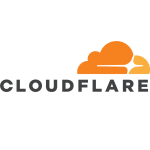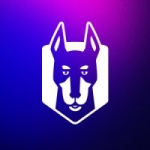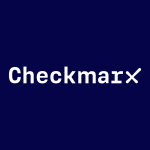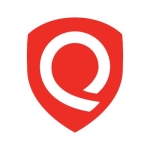What is our primary use case?
There are three pieces to our use case. For the container piece, which used to be Twistlock, we use static scan to scan our artifact repositories and we use that data to remediate issues and provide it back to developers. We also do runtime monitoring on our orchestrators, which are primarily Kubernetes, but some DC/OS as well. Right now, it's all on-premises, although we'll be moving that to the cloud in the future.
And we use what used to be RedLock, before it was incorporated into the solution.
How has it helped my organization?
Prisma Cloud has definitely enabled us to integrate security into our CI/CD pipeline and add touchpoints into existing DevOps processes for container. In the container those touchpoints are pretty seamless. We've been able to implement security control gates and automate notifications back to teams of vulnerabilities in the container orchestrator. It all works pretty smoothly, but it required a fair amount of work on our part to make that happen. But we did not run into limitations of the tool. It enabled us pretty well. The one part where we have a little bit of a gap that most of those are at deployment time. We haven't shifted all those controls back to the team level at build time yet. And we haven't really tackled the cloud space in the same way yet.
I'm not sure we have SecOps in the container space exactly in the same way we do in other DevOps. We shifted a lot of the security responsibility into the development teams and into the Ops teams themselves. There's less of a separation. But overall, the solution has increased collaboration because of data visibility.
It also does pretty well at providing risk clarity at runtime, and across the entire pipeline, showing issues as they are discovered during the build phases. It does a good job in terms of the speed of detection, and you can look at it in terms of CVSS score or an arbitrary term for severity level. Our developers are able to correct the issues.
We are clearly better off in that we have visibility, where there was a gap before. We know where our container vulnerabilities and misconfigurations are, and even on the cloud side, where cloud misconfigurations are happening. That visibility is a huge benefit.
The other part is actually using that data to reduce risk and that's happened really well on the container side. On the cloud side, there's still room to grow, but that's not an issue with Prisma Cloud itself. These tools are only a part of the equation. It takes a lot of organizational work and culture and prioritization to address the output of these tools, and that takes time.
What is most valuable?
The ability to monitor the artifact repository is one of the most valuable features because we have a disparate set of development processes, but everything tends to land in a common set of artifact repositories. The solution gives us a single point where we can apply security control for monitoring. That's really helpful.
Another valuable feature is the ability to do continuous monitoring at runtime. We can feed that data back to developers so they can get intelligence on what's actually deployed, and at what level, versus just what's in the artifact repository, because those are different.
In the security space, most security solutions typically do either development-side security, or they do runtime operational security, but not both. One of the relatively unique characteristics of this solution in the marketplace—and it may be that more and more of the container security solutions do both sides—is that this particular solution actually spans both. We try to leverage that.
And for the development side, we utilize both the vulnerability results from the static vulnerability scanning as well as the certain amount of configuration compliance information that you can gather from the static pre-deployment scans. We use both of those and we pay attention to both sides of that. Because this solution can be implemented both on the development side and on the runtime operational side, we look at the same types of insights on the operational runtime side to keep up with new threats and vulnerabilities. We feed that information back to developers as well, so they can proactively keep up.
We have multiple public clouds and multiple internal clouds. Some of it is OpenStack-based and some of it is more traditional VM-based. Prisma Cloud provides security spanning across these environments, in terms of the static analysis. When we're looking at the artifact repository, the solutions we're using Prisma Cloud to scan and secure will deploy to both public cloud and internal cloud. Moving into 2021, we'll start to do more runtime monitoring in public cloud, particularly in AWS. We're starting to see more EKS deployment and that's going to be a future focus area for us. It's extremely important to us that Prisma Cloud provides security across these environments. If Prisma didn't do that, that would be a deal-breaker, if there were a competitor that did.
Public cloud is strategically very important to our company, as it probably is for many companies now, so we have to have security solutions in that space. That's why we say the security there is extremely important. We have regulatory compliance requirements. We have some contractual obligations where we have to provide certain security practices. We would do that anyway because they are security best practices, but there are multiple drivers.
Applying some of their controls outside of the traditional container space, for example, as we're doing hybrid cloud or container development, is helpful. Those things get their tentacles out to other areas of the infrastructure. An example would be that we look at vulnerabilities and dependencies as we develop software, and we use Prisma Cloud to do that for containers. We use other tools outside of the container space. They're starting to move into that other space so we can point Prisma Cloud at something like a GitHub and do that same scanning outside of the container context. That gives us the ability to treat security control with one solution.
What needs improvement?
When it comes to protecting the full cloud-native stack, it has the right breadth. They're covering all the topics I would care about, like container, cloud configuration, and serverless. There's one gap. There could be a better set of features around identity management—native AWS—IAM roles, and service account management. The depth in each of those areas varies a little bit. While they may have the breadth, I think there's still work to do in flushing out each of those feature sets.
My understanding of Palo Alto's offerings is that they have a solution that is IAM-focused. It's called Prisma Access. We have not looked at it, but I believe it's a separately-licensed offering that handles those IAM cases. I don't know whether they intend to include any IAM-type of functionality in the Prisma Cloud feature set or whether they will just say, "Go purchase this separate solution and then use them next to each other."
Also, I don't think their SaaS offering is adoptable by large enterprises like ours, in every case. There are some limitations on having multiple consoles and on our ability to configure that SaaS offering. We would like to go SaaS, but it's not something we can do today.
We have some capability to do network functions inside of Prisma Cloud. Being able to integrate that into the non-cloud pieces of the Palo Alto stack would be beneficial.
The solution's security automation capabilities are mixed. We've done some API development and it's good that they have APIs, that's beneficial. But there is still a little disconnect between some of the legacy Twistlock APIs versus some of the RedLock APIs. In some cases the API functionality is not fully flushed out.
An example of that is that we were looking at integrating Prisma Cloud scans into our GitHub. The goal was to scan GitHub repositories for CloudFormation and Terraform templates and send those to Prisma Cloud to assess for vulnerabilities and configuration. The APIs are a little bit on the beta-quality side. It sounds like newer versions that some of that is handled, but I think there's some room to grow.
Also, our team did run into some discrepancies between what's available, API-wise, that you have to use SaaS to get to, versus the on-premise version. There isn't necessarily feature parity there, and that can be confusing.
For how long have I used the solution?
We've been using Prisma Cloud by Palo Alto for about two-and-a-half years.
What do I think about the stability of the solution?
The stability has been excellent. The solution simply runs. It very seldom breaks and, typically, when it does, it's easy to troubleshoot and get back on track.
What do I think about the scalability of the solution?
The scalability has been good for our use cases.
When we first adopted it, a single console could cover 1,000 hosts that were running container workloads. That was more than enough for us, and to date it has been more than enough for us, because we have multiple network environments that need to stay separated, from a connectivity standpoint. We've needed to put up multiple consoles, one to serve each of those network environments. Within each of those network environments, we have not needed to scale up to 1,000 yet.
There's wide adoption across our organizations, but at the same time there is tremendous room to grow with those organizations. Many organizations are using it somewhat, but we are probably at 20 to 25 percent of where we need to be.
It's safe to say we have several hundred people working with the solution, but it's not 1,000 yet. They are primarily developers. There are some operational folks who use it as well. To me, that speaks to the ease of deployment and administration of this solution. You really don't need a large operational group to deploy. When it comes to security, incident response, and the continuous monitoring aspects that a continual security team does, I don't have insight because I don't work in that area of the company, but I see that as expanding down the road. It's another area of growth for us.
How are customer service and technical support?
Their technical support has been very good. Everyone that I've been involved with has been very responsive and helpful. They have remained engaged to drive resolution of issues that we have found.
Which solution did I use previously and why did I switch?
We did not have a previous solution.
How was the initial setup?
Standing up an instance is quite simple, for an enterprise solution. It has been excellent in that regard.
It's hard to gauge how long our deployment took. We have multiple consoles and multiple network contexts, and a couple of those have different sets of rules and different operational groups to work with. It took us several months across all those network environments that we needed to cover, but that's not counting the actual amount of time it took to execute steps to install a console and deploy it. The actual steps to deploy a console and the Defenders is a very small amount of time. That's the easiest part.
Our implementation strategy for Prisma Cloud was that we wanted to provide visibility across the SDLC: static scan, post-build, as things go to the artifact repository. Our goal was to provide runtime monitoring at our development, test, and production platforms.
What about the implementation team?
What's my experience with pricing, setup cost, and licensing?
I don't know a better way to do it, but their licensing is a little confusing. That's due to the breadth of different types of technologies they are trying to cover. The way you license depends on where you're securing. When they were Twistlock it was a simple licensing scheme and you could tell what you were doing. Now that they've changed that scheme with Palo Alto, it is quite confusing. It's very difficult to predict what your costs are going to be as you try to expand coverage.
Which other solutions did I evaluate?
At the time we looked at our incumbent vendors and others that were container-specific. We were trying to avoid a new vendor relationship, if possible. We looked at Rapid7 and Tenable. Both were starting to get into the container space at the time. They weren't there yet. We did our evaluation and they were more along the lines of a future thought process than an implementable solution.
We looked at Twistlock, which was a start-up at the time, and Aqua because they were in the space, and we looked at a couple of cloud solutions, but they were in cloud and working their way to container. We did the same exercise with Evident.io and RedLock, before they were purchased by Palo Alto. They were the only vendors that covered our requirements. In the case of Twistlock, their contributions in the NIST 800-190 standards, around container security, helped influence our decision a little bit, as did the completeness of their vision and implementation, versus their competitors.
What other advice do I have?
My advice would be not to look at it like you're implementing a tool. Look at it like you're changing your processes. You need to plan for the impact of the data for the various teams across Dev and Security and Ops. Think very holistically, because a lot of this cloud container stuff spans many teams. If you only look at it as "I'm going to plug a tool in and I'm going to get some benefit," I think you'll fail.
Prisma Cloud covers both cloud and container, or could cover either/or, depending on your needs. But in both of those cases, there's often confusion about who owns what, especially as you're creating new teams with the transition to DevOps and DevSecOps. Successful implementation has a lot to do with working out lines of ownership in these various areas and changing processes and even the mindset of people. You have to make strides there to really maximize the effectiveness of the solution.
The solution provides Cloud Security Posture Management in a single pane of glass if you're using the SaaS solution, but we do not. Our use case does not make it feasible for us to use the SaaS solution. But with the Prisma Cloud features and compute features in the self-hosted deployment, you have to go to multiple panes to see all the information.
When it comes to the solution helping us take a preventative approach to cloud security, it's a seven or eight out of 10. The detective side is a little higher. We are using the detective controls extensively. We're getting the visibility and seeing those things. There is a lot of hesitance to use preventative controls here, both on the development side—the continuous integration stuff—and particularly in the runtime, continuous monitoring protection, because you are just generally afraid. This mirrors years and years ago when intrusion prevention first came out at the network level. A lot of people wanted to do detection, but it took quite a few years for enterprises to get the courage to start actively blocking. We're in that same growth period with container security.
When it comes to securing the entire cloud-native development lifecycle, across build, deploy, and run, it covers things pretty well. When I think about it in terms of build, there are integrations with IDEs and development tools and GitHub, etc. Deploy is a little shakier to me. I know we have Jenkins integration. And run is good. In terms of continuous monitoring, it feels build and run are a little stronger than deploy. If we could see better integration with other tools, that might help. If I'm doing that deploy via Terraform or Spinnaker, I don't know how all that plays with the Jenkins integrations and some of the other integrations that Palo Alto has produced.
Overall, it feels like a pretty good breadth of integrations, as far as what they claim. They certainly support some things that we don't use here at build and deploy and runtime. But a lot of what they rely on, in terms of deploy, is API-driven, so it's not an easy-to-configure, built-in integration. It's more like, "We have an API, and if you want to write custom software to use that API, you can." They claim support in that way, but it's not at the same level as just configuring a couple of items and then you can scan a registry.
In the container space, we have absolutely seen benefit from the solution for securing the cloud-native development lifecycle. At the same time, it has required some development on our part to get the integration. Some of that is because we predated some of the integrations they offer. But in the container space, there has definitely been a huge impact. The impact has been less so in cloud configuration, because there are so many competing offerings that can do that with Terraform and Azure Security Center and Amazon native tools. I don't feel like we've made quite the same inroads there.
In terms of it providing a single tool to protect all of our cloud resources and applications, I don't think it does. Maybe that's because of our implementation, but it just doesn't operate at every level. I don't think we'd ever go down that path. We have on-premise tools that have been here a long time. We've built processes around reporting. Vulnerability scanning is an example. We run Nessus on-premise, and we wouldn't displace Nessus with, say, a Twistlock Defender to do host-level scanning in the cloud, because we'd have a disparate tool set for cloud versus on-premise for no reason. I don't ever see Prisma Cloud being the single solution for all these security features, even if they can support them.
It's important that it integrate with other tools. We talked earlier about a single dashboard. A lot of those dashboards are aggregating data from other tools. One thing that has been important to us is feeding data to Splunk. We have a SIEM solution. So I would always envision Prisma Cloud as being a participant in an ecosystem.
In summary, I actually hate most security products because they're very siloed and you have mixed-vendor experiences. I don't think they take a big-picture view. I've been really pleasantly surprised with how Prisma Cloud is, over time, covering more and more of the topics I care about, and listening to customer feedback and growing the product in the right directions. For the most part, it does what they say it will do. The vendor support has also been good. I would definitely give the vendor an eight out of 10 because they've been great in understanding and providing solutions in the space, and because of the reliability and the responsiveness. They've been very open to our input as customers. They take it very seriously and we've taken advantage of that and developed a good relationship with them.
When it comes to the solution itself, I would give the compute solution an eight. But I don't think I would give the Prisma Cloud piece an eight. So overall, I would rate the solution as a seven because the compute is stronger than the other piece, what used to be RedLock.
I would also emphasize that what I think is a strong roadmap for the product and that Palo Alto is really interested in customer feedback. They do seem to incorporate it. That may be our unique experience because our use cases just happen to align with what Palo wants to do, but I think they're heading in the right direction.
Early on in a solution's life cycle or problem space, it's more important to have that responsiveness than it is even to have the fullest of solutions. The fact that we came across this vendor, one that not only mostly covered what we needed when we were first looking for it three years ago, but that has also been as responsive as they have to grow the solution, has been really positive.
Which deployment model are you using for this solution?
On-premises
Disclosure: PeerSpot contacted the reviewer to collect the review and to validate authenticity. The reviewer was referred by the vendor, but the review is not subject to editing or approval by the vendor.


















